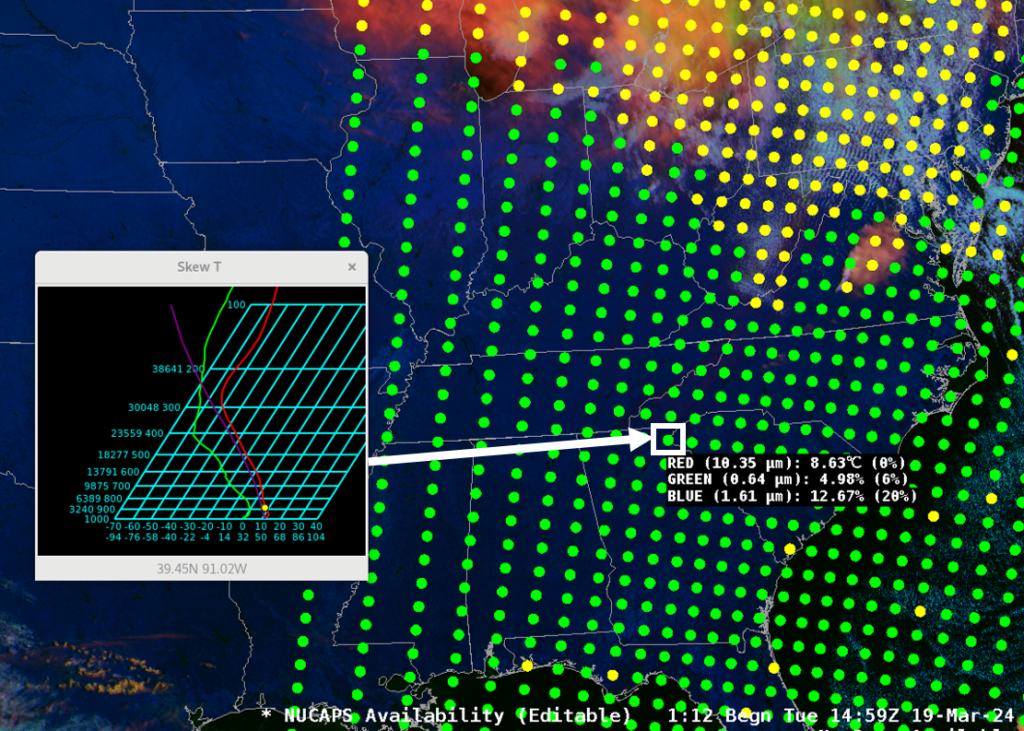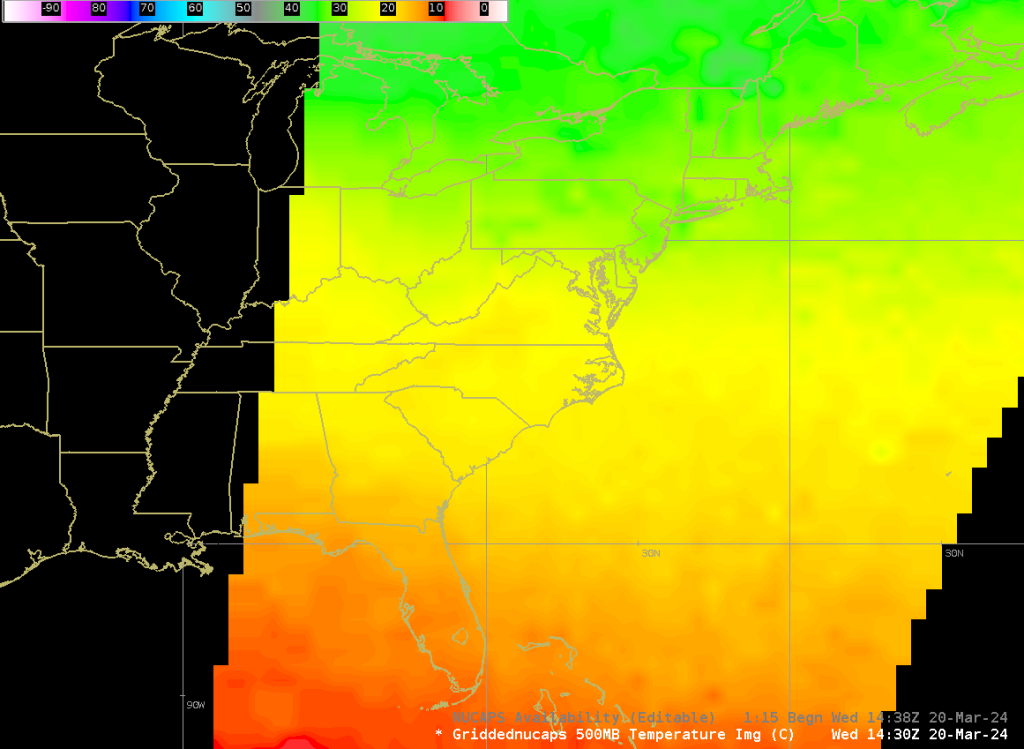Metop-C NUCAPS Soundings Available in AWIPS
In complement to the NOAA-20 NUCAPS soundings, National Weather Service (NWS) forecasters now have access to another set of satellite-derived soundings from the European Metop-C satellite in AWIPS-II. As of 11 March 2024, the Metop-C NUCAPS soundings are accessible via Satellite Broadcast Network (SBN) across the CONUS (and globally). The Metop-C soundings provide mid-morning overpasses over the Lower-48 (i.e., ~14Z-17Z, from east coast to west coast) to assist in analyzing the pre-convective environment and provide overpasses during the late evening/overnight hours (i.e., ~01Z-05Z, from east coast to west coast). A swath of Metop-C NUCAPS profile sounding points can be seen below.
Metop-C NUCAPS soundings over the eastern U.S. at ~15Z, 19 March 2024.

Over the same time period, GOES-16 Day Cloud Phase Distinction RGB imagery was overlaid onto the Metop-C NUCAPS soundings, and show a clear-sky environment for a good portion of the southeast U.S. Employing the Pop-Up Skew-T function in AWIPS-II, a green sounding point (i.e., an indication of a successful infrared and microwave NUCAPS retrieval) was selected near the South Carolina and Georgia border, that observes a dry boundary layer near the surface and aloft.
A Metop-C NUCAPS profile displayed near the Georgia and South Carolina border at ~15Z, 19 March 2024.

Gridded NUCAPS (i.e., plan-view displays of the temperature and moisture fields) from Metop-C are also available for user consumption. An example of Gridded NUCAPS over the east coast can be viewed below.
Metop-C Gridded NUCAPS 500 millibar (mb) temperatures at ~1439Z, 20 March 2024.

At the time of this blog entry, there is not a way to differentiate between NOAA-20 and Metop-C NUCAPS soundings in AWIPS-II. In the meantime, forecasters can identify and differentiate the orbit tracks by referring to the NOAA VLab Polar Planner Tool and the SSEC Polar Orbit Tracks website.
In the incoming months, forecasters can also look forward to another set of satellite-derived soundings from NOAA-21 to become available in AWIPS-II.
Note, users can access NUCAPS soundings online via NOAA OSPO Global Map and the Gridded NUCAPS datasets over CONUS via RealEarth and NASA SPoRT webpages.
